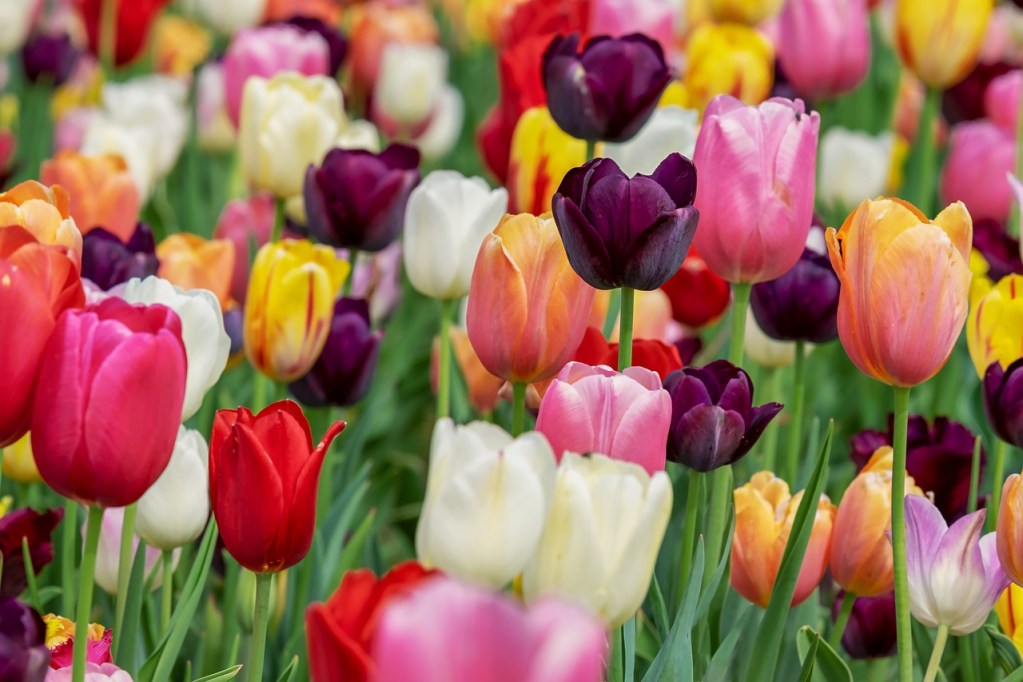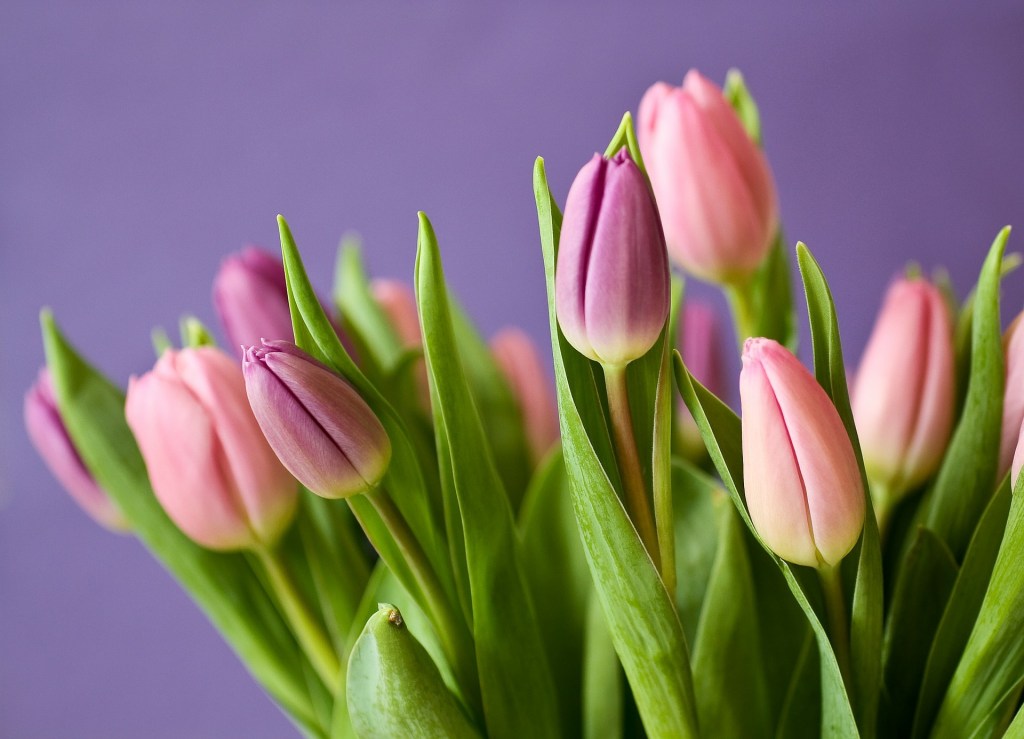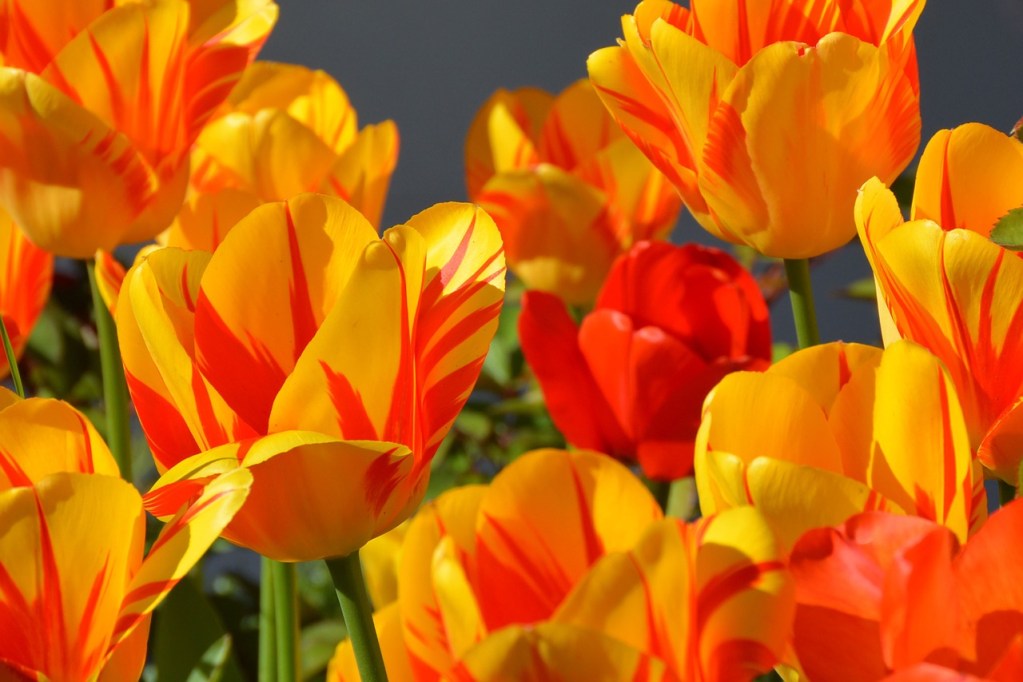Tulips are a beautiful flower, often used to signify that spring has arrived. They come in a wide variety of colors, from bright pinks and reds to dark purples and blacks, and are the perfect gift for a wide range of holidays, including Mother’s Day, Valentine’s Day, and even Easter. Tulips are easy to grow and care for, making them excellent for gardeners who are just starting out. Whether you’re growing them for bouquets or just to add a little color to your garden, tulips can be grown in any garden. If you want to add tulips to your home or garden, we’ve got all the information you need to make sure they thrive.

Best tulip varieties
Darwin hybrid tulips are mid-season tulips that bloom in a variety of shades, including pink, red, yellow, orange, and purple. These tulips are reliable, typically blooming for several years in a row. They also have increased weather resistance, making them a good fit for areas that may have too much wind for other tulip varieties.
Fringe tulips are a great option if you’re looking for something a little less typical. They come in a myriad of colors, from pastel purples and pinks to vibrant oranges and reds; there are even some multicolored varieties. However, unlike other tulips, they have a unique feature. The edges of their petals are feathery and resemble frayed fabric. Fringe tulips tend to bloom in the second half of the blooming season, typically in April or May.
Peppermint Stick is a tiny variety of tulips that blooms in stripes of pink and white and tends to have a more narrow bloom shape than other tulips. It grows to only about 10 inches in height, half the size of most tulips. Peppermint Stick tulips are very reliable, coming back year after year, typically mid-season.
Viridiflora tulips, or green tulips, get their name from the streak of green down their petals. This is an heirloom variety that’s been in gardens for roughly 70 years. The classic flower color for this variety is pale pink, but you can also get viridiflora tulips in a range of brighter colors as well. The flowers are wider than a standard tulip with slightly curled edges and typically bloom later in the season. Although they don’t last all year, they do last fairly long for tulips.

Planting your tulips
When should you plant tulips?
Tulips are typically planted in the fall. During winter they develop their roots and prepare to grow when the weather warms. Depending on your USDA hardiness zone, you can plant your tulips anytime from September to November. Tulips are hardy in zones 3 through 8, and many varieties can be grown in containers if you live outside of that range. In general, look for a time when the soil temperature is lower than 60 degrees Fahrenheit.
How to plant your tulips
Choose a planting location with full or partial sun. In hotter regions, look for a place that gets morning sun and afternoon shade. Tulips are not picky about soil type, but they don’t tolerate standing water. Make sure your soil is well-draining and be careful not to overwater them.
Plant your bulbs 5 to 7 inches deep, with the tip pointing up. Give them roughly 5 inches of space on all sides, so they’ll have plenty of room for their roots and leaves. Once they’re planted, water them once. You won’t need to water them again until spring.

Caring for your tulips
During winter, continue to weed your garden and care for your other plants as you normally would, but leave your tulips alone. Resume watering them in the spring, when the weather begins to warm, and you’ll start to see green shoots pushing through the soil soon after. Continue to water them when the soil dries out. You can give them some compost or balanced time-release fertilizer in the fall when you plant them, but otherwise, most tulips grow fine without additional fertilizers.
Tulips are fairly pest and disease resistant, but sometimes have trouble with small rodents. If you’ve had problems with mice or voles in the past, consider adding a textural barrier around the bulbs, such as holly or gravel. If you’re growing tulips to use as cut flowers, then cut the stem and leave the leaves as intact as possible. Wait for the leaves to fully die before removing them.
These flowers are perennials, meaning they bloom for multiple years. However, the climate in North America is not ideal for tulips, which has led to them becoming more and more similar to annuals over time. How likely your tulips are to return each year depends on the variety, as some are more reliable than others.
Tulips are a stunning, colorful addition to any home, yard, or garden. No matter what your garden aesthetic is like, there’s a tulip variety that fits perfectly. Whether you like pretty pastels or brooding darkness, tulips will blend in or stand out. As an added bonus, they grow well in a wide range of climates, so you don’t need to worry about the weather. Now that you know the basics of tulip care, you’re ready to add these delightful perennials to your garden.
Editors' Recommendations
- Plant these stunning flowering shrubs for a showstopping garden display this spring
- 3 incredible reasons why you should be using coffee grounds in your garden
- Have a gross mealybug infestation on your plants? Try one of these remedies
- Unique and whimsical flowers to add to your collection for a fairy-tale garden landscape this spring
- Celebrate Lunar New Year with these beautiful flowers





